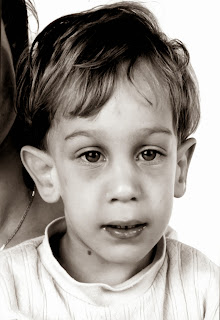 |
| Fig 1: Unilateral ptosis |
•AI
•vs ACh receptors (NMJ postsynaptic memb)
SYMPTOMS
•Facial weakness
•Slurred speech
•Dyspnoea
•(Prox) Limb weakness
•Worse @ end of day
AUTONOMIC •Nil
SIGNS
CRANIAL •Ptosis (episodic, unilateral, bilateral)
•Ophthalmoplegia (episodic)
•Dysarthria
•Bulbar symptoms & nasal regurgitation
•Head drooping (weakness of neck musculature)
MOTOR •Fatigable weakness of striated muscle
•Respiratory muscle (ife-threatature)
•n/↑ Reflexes
CAUSES
•AI
•Penicillamine
INVESTIGATIONS
•90%Anti-ACh receptor antibody
•Antistriated muscle antibody
•80%Thymoma
EMG •↓ Muscle action potential + rapid stimulation
•Post activation exhaustion
TENSILON TEST •IV edrophonium (short acting anticholinesterase)
CT THORAX •?associated thymoma
TFT •10%Thyrotoxicosis;
TREATMENT
•Thymectomy
•Steroids
•Immunosuppression (Cyclophosphamide, Ciclosporin)
•Plasmapheresis
•IV Ig
Further Reading















